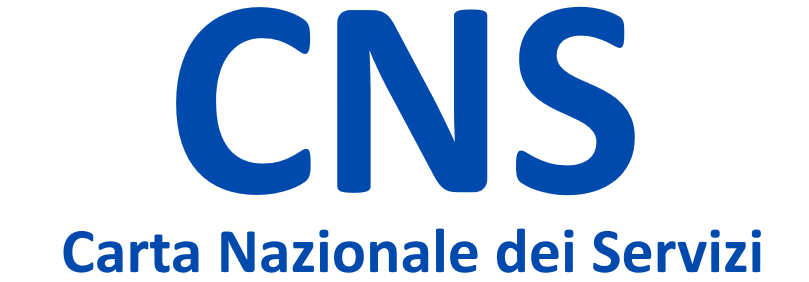The electronic health record
What is that?
The electronic health record (EHR) is the online tool available to every citizen (adult and minor) that allows them to collect and consult their digital health data and documents at any time, from visit and analysis reports to vaccination certificates and prescriptions. of drugs. Through this digital platform it is possible to keep one's medical history and use some health services, such as the choice and revocation of the general practitioner and pediatrician of free choice, the booking of visits and tests and the payment of the ticket. Healthcare professionals (doctor, nurse, pharmacist, psychologist, biologist) can access the patient's electronic health record and consult the health documentation (except for the data that the patient has decided to obscure) to have a broader clinical picture and precise and be facilitated in the care activity.
The National Recovery and Resilience Plan (Pnrr) envisaged, as part of mission 6 dedicated to health, expanding the contents of the electronic health record compared to the minimum core initially defined.
What it contains
The availability of data and documents within the electronic health record currently still varies from region to region. But by 2026, as established by the Pnrr, all the contents and services described below must be guaranteed throughout the national territory.
By accessing the site www.fascicolosanitario.gov.it. it is possible to monitor the progress of health files at a regional level.
The National Recovery and Resilience Plan (Pnrr) envisaged, as part of mission 6 dedicated to health, expanding the contents of the electronic health record compared to the minimum core initially defined.
Identification and administrative data
They indicate the name and surname of the patient, his/her tax code, address of residence and domicile, the health care company, any exemptions from the payment of the copay (due to pathology, income, disability) and the assigned primary care doctor or pediatrician.
Laboratory reports
After carrying out blood, urine, stool, swab or genetic tests, the user can consult the results in the electronic file.
Radiology reports
After undergoing x-ray, CT, magnetic resonance imaging, ultrasound or mammography tests, the user can consult the diagnostic images in the electronic file.
Outpatient specialist reports
After undergoing a specialist medical examination or an instrumental examination, the user can consult the result in the electronic file.
Electronic medical record of hospital admission
Contains patient data relating to diagnostic investigations, diagnosis and treatment during hospitalization. If the file used by the hospital is not in digital format and is still paper, it cannot be uploaded to the electronic health record.
Dispensing of prescription drugs
It is the document that certifies the supply of all drugs that require a doctor's prescription: both those in band A, reimbursed by the National Health Service and those in band C, paid for by the citizen. It also includes those prescribed by authorized specialized centers and provided with a therapeutic plan.
Hospital discharge letter
It is the document in which the hospitalization department, initial and final diagnosis, medical history, drug therapy, hospital course, complications, specialist consultations, instrumental investigations and surgical interventions during hospital admission are detailed.
Summary health profile
It is the document in which the general practitioner or pediatrician enters the patient's clinical health information: drug therapies, vaccinations, declaration on organ donation, current pathologies, pregnancy and births, weight, height, body mass index, blood pressure , activation of home care, any codes for exemption from copays, surgical interventions, visits and hospitalizations.
Card for implant recipients
It is the information sheet of the device implanted in the person (pacemaker or defibrillator) which shows the name and type of the device, serial number, name and address of the manufacturer, date of implantation, name and address of the healthcare facility that performed the plant.
Provision of telemedicine services
It is the document that awaits the provision of remote visits and checks using advanced IT tools by both public and private accredited healthcare facilities.
Pathological anatomy reports
After undergoing a cytological (to search for abnormal cells) or histological (to identify tissue pathologies) examination, the user can consult the result in the electronic file.
First aid report
It is the document that describes all the procedures, diagnostic tests and consultations during the patient's clinical journey in the emergency room and is issued upon discharge.
Cards of individual vaccinations carried out
Indicates the type of vaccine performed, the part of the body where it was administered, the date and site of administration.
Drug prescriptions
These are electronic prescriptions for drugs prescribed by the general practitioner or specialist.
Provision of specialist services paid by the NHS
It is the document that certifies the provision of specialist visits and instrumental tests carried out publicly.
Prescriptions for specialist visits and tests
These are the electronic prescriptions for booking specialist visits or instrumental tests paid for by the National Health Service.
Vaccination certificate
It certifies all vaccinations carried out throughout life.
Invitation letter for screening, vaccination or other prevention courses
It is the letter of invitation to undergo cancer prevention tests, vaccinations or the hepatitis C test, which until now the ASL has sent via ordinary mail.
Personal notebook
It is the reserved area in which citizens can independently add health data and documents that they deem useful to keep track of their health. For example: signs and symptoms, recurrent infections, self-medication therapies, body temperature, reports and prescriptions. Data generated by electronic devices and reports that have not yet been made available by the structure that provided the service can also be uploaded.
Services
Choice and revocation of the doctor
The user can request the choice (or revocation) for himself or for a delegate of a general practitioner from among those proposed by the registry. The delegated parent will be able to choose and revoke the pediatrician of free choice for the minor child.
Request for variation of exemption
The user can submit the self-certification for the attribution or revocation of an exemption from the payment of the health copay for himself or for a delegate.
Performance booking
The user can consult the availability of specialist visits and tests and proceed with the online booking through the electronic health record.
Ticket payment
The user can pay the ticket for one or more healthcare services.
Geolocation of pharmacies
The user can search for the pharmacy closest to their location.
Geolocation of emergency rooms and hospitals
The user can locate the hospitals in their area and the closest and least crowded emergency room by consulting the accesses in real time.
Emergency-urgency services
The user can activate ambulance intervention (118/112). The position is sent automatically through a special function inserted in the electronic health record.
How to access
All adult citizens can directly access their electronic health record, through a certified digital identity that allows access to the online services of the public administration.
There are three ways to create a digital identity.

Via SPID
To obtain spid credentials (the public digital identity system) you must contact one of the digital identity managers authorized by the Agency for Digital Italy (Agid), to whom you must provide identity document and health card, email address and number of cell phone. For all instructions, consult the site www.spid.gov.it.

Via CIE
Access via the electronic identity card to the electronic health record (and to all other online public administration services) is possible through the CieID app which can be downloaded onto your mobile phone, after activating your credentials on the website www.cartaidentita.interno .gov.it.

Via CNS
The national services card is activated on the health card by retrieving the relevant pin and puk codes at the enabled regional counters. Through a smart card reader installed on your computer it is possible to obtain digital identity credentials. For all instructions, consult the site www.sistemats1.sanita.it.
Minors cannot directly access their electronic health records.
Only parents (or those exercising parental responsibility), after requesting delegation, can connect to the minor child's file from their own, using their personal credentials.
The delegation can be activated online via the "Delegation" function in the parent's file or physically at the dedicated counter of the local health authority or municipality.
Access to the electronic health record of a person who, due to physical or mental problems (due to old age, disability, substance abuse, terminal illness or coma) is unable to take care of his or her interests, in part or completely, is permitted to his support administrator, guardian (assigned to people declared disqualified due to mental illness) or curator (assigned to those who are partially incapable of acting).
Who can access
The electronic health record is continuously fed by healthcare workers from both public and accredited private facilities.
Past documents are uploaded only if they have been made available in digital format by the structure that provided the service.
Upon first access to the file, the citizen is asked to express consent to the consultation of the contents by healthcare personnel (with the exception of data that is decided to be obscured).
It is possible to deny consent to consultation at any time.
In cases of serious risk to health or physical safety, physical impossibility, inability to act or to intend, even if the citizen has not expressed consent to the consultation of his/her ESF data, healthcare personnel may have access to the contents (except those that it was decided to obscure) with the obligation to save life prevailing over everything else.
You can delegate up to three different subjects to access your electronic health record and each subject can receive a maximum of 5 delegations. The delegation can be activated online via the "Delegation" function in the file or physically at the dedicated counter of the local health authority or municipality.
The right to blackout data
Every citizen has the right to choose which data and documents present in the ESF are obscured, making them visible only to himself and to the doctor who generated them.
The blackout request can be made to the health facility operator at the time of provision of the service (visit, examination, vaccine, prescription, access to the emergency room, hospitalization, ...) or subsequently, via the appropriate electronic file option which guarantees the immediate darkening of the content.
Health data and documents relating to:
- HIV virus
- voluntary termination of pregnancy
- suffered acts of sexual violence (or pedophilia)
- use of drugs and alcohol
- I leave anonymously
- services of the consultants
The subjects who feed it
General practitioners, paediatricians and all healthcare facilities, both public and private accredited with the NHS and non-accredited private ones, have the obligation to fill in the electronic health record.
If the patient receives a health service in a region other than that of residence, the structure that provided the assistance service (emergency room intervention, hospitalization, visit or examination, vaccine) must upload the health documents (discharge letter, medical records, reports, prescriptions, certificates) on the off-site patient file.
At the moment, not in all regions, accredited and non-accredited private centers already upload health documents to the electronic files of their patients.
If the facility does not yet make them available, the patient will be able to independently upload the reports to their notebook (the reserved area available in their EHR).
The electronic file must contain the clinical data concerning health services provided under the public regime (i.e. paid by the NHS), those provided under the intramoenia regime (entirely paid by the citizen and provided by accredited public or private structures) and those provided under the private by private structures.





